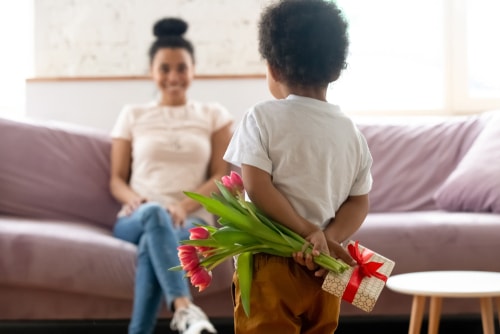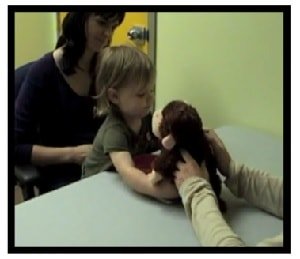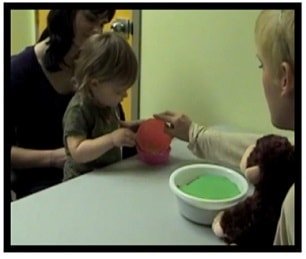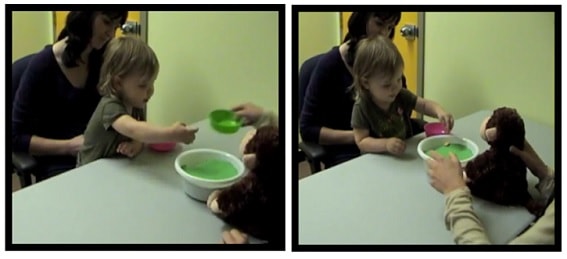
[ad_1]
Are little youngsters hopelessly egocentric? Many individuals assume so. However scientific analysis suggests in any other case. Like adults, kids expertise the nice and cozy glow of giving. And it’s a motivating power for good.

Psychologists name it “the nice and cozy glow of giving,” and it’s a well-documented phenomenon amongst adults. In actual fact, neuroscientists have tracked it within the mind. Once we have interaction in acts of altruistic giving — serving to others at a value to ourselves — we skilled heightened exercise within the mind’s reward facilities (Filkowski et al 2016). And what’s attention-grabbing about giving is that we don’t change into habituated to its results — not simply.
In experiments the place researchers in contrast giving and receiving, they discovered that folks shortly grew to become accustomed to receiving a each day money prize. They reacted with progressively much less happiness because the week rolled by. But when individuals gave these each day windfalls to another person? The happiness didn’t diminish (O’Brien and Kassirer 2019).
So giving to others offers us a direct, nice, physiological rush. Why? It’s most likely associated to the pure excessive we expertise when any person smiles at us (Yang and Urminsky 2018). Present-giving is a reasonably dependable approach of eliciting that response. It might additionally depend upon our capability to empathize and have interaction in perspective-taking. However regardless of the speedy triggers could also be, it’s clear that this “heat glow” has good penalties. It motivates us to present. So we’re left with an necessary query about youngster growth.
Do little youngsters really feel the nice and cozy glow? Does it encourage them to present?
Laura Aknin and her colleagues needed to know, in order that they designed a pioneering experiment (Aknin et al 2012).

The researchers recruited Canadian toddlers — solely 20 to 22 months of age — and launched these kids to a few strangers: A pleasant human experimenter, and an equally nice animal puppet named “Monkey.”
The grownup experimenter defined that Monkey favored treats, and identified that neither Monkey nor the kid had any. Then experimenter pretended to find some treats. (“Oh look! I discovered some treats!”) The experimenter gave them to the kid.

The researchers had been videotaping all of this, so they may seize the kid’s emotional response when she or he first obtained the treats. And the digital camera saved working throughout the remaining a part of the process, which included three extra occasions:
- The experimenter “discovered” one more deal with, which she gave to the puppet. “Oh look! I discovered yet one more deal with. I’m going to present it to Monkey!”
- The experimenter discovered a further deal with. However as an alternative of merely handing it over to Monkey, the experimenter requested the kid to play a job. “Oh look! I discovered yet one more deal with. Will you give it to Monkey?”
- The experimenter pretended to search for additional treats. No success. So the experimenter prompted the kid to interact in what psychologists name “pricey sharing.” The experimenter requested the kid to donate a deal with from his or her personal, private stash. “I don’t see any extra treats. Will you give one among your treats to Monkey?”
To ensure the order of those occasions didn’t have an effect on outcomes, the researchers combined issues up. Some youngsters skilled the request to share first; others skilled it later, after they’d noticed the grownup experimenter give Monkey a deal with. However by the tip, each youngster had skilled all three occasions, and children had been cooperative when requested to present.

So how did kids really feel throughout the experiment?
When neutral, educated observers appeared over the video recordings, they detected a little bit surge of happiness in kids once they first met the puppet. Children confirmed significantly much less happiness once they obtained that preliminary, one-sided windfall of treats. However afterwards, moods improved — particularly when youngsters engaged in sharing, and most particularly when youngsters engaged in pricey sharing.
Certainly, the youngsters appeared to get pleasure from giving greater than receiving. They displayed extra happiness once they shared treats with Monkey. And the very best ranges of happiness? Children appeared to get pleasure from themselves probably the most after they handed over a deal with from their very own, private stash.
A fluke? There have been solely 23 toddlers on this experiment, and we will at all times query whether or not the outcomes of 1, small research mirror probability components. We must also watch out about generalizing from one tradition to the subsequent. These youngsters lived in Canada. Possibly Canadian kids are raised to really feel particularly pleased about giving.
But different, subsequent research — performed in a number of totally different societies — again up the central concept: Younger kids get a heat glow from being beneficiant.
For instance, Lara Aknin’s group visited an remoted, rural village on Tanna, a small island within the South Pacific.

The researchers performed the identical experiment on a gaggle of 20 youngsters — kids ranging in age between 28 and 50 months — and the outcomes had been the identical. Children appeared happier giving than receiving, and so they displayed the very best ranges of happiness once they gave away their very own treats (Aknin et al 2015).
And, extra just lately, one other analysis group — led by Yue Track — examined Aknin’s experimental process on 122 toddlers dwelling within the Netherlands and 91 preschoolers dwelling in China. As soon as once more, the researchers discovered proof for the “heat glow” of giving. Children had been happier once they shared — particularly when their act of sharing got here at a private price.
So it actually does seem that younger kids benefit from the act of giving. And there’s extra proof that such emotions immediate kids to be beneficiant. In a research of preschoolers, the children who had been most probably to be beneficiant had been those who had a aware understanding of the psychological rewards of giving (Paulus and Moore 2017).
However hold on. How does this jibe with our on a regular basis observations? Of conflicts? Of youngsters who refuse to share?
If the outcomes of those research appear to defy your on a regular basis expertise — if evidently your toddler’s favourite phrase is “mine!” — contemplate the context. Within the puppet experiments, kids had been guided by a pleasant grownup, and the quantity of generosity requested from them was comparatively modest. Children with a number of treats had been requested to spare just a few for another person.
It was pricey sharing, sure, however the price wasn’t particularly excessive. No person requested the children handy over their cherished possessions. In case your toddler is reluctant to belief her favourite toy with one other youngster, we have to bear in mind: This can be a very regular response, and it isn’t solely toddlers who really feel this fashion.
I believe most mother and father aren’t within the behavior of sharing their most valued possessions with individuals they meet on the playground. And for younger kids, this sort of sharing could really feel particularly dangerous. They’re missing in authority, expertise, and confidence. If I let Mike play with my toy truck, will he give it again? Possibly not!
So in relation to these extra dangerous acts of sharing, we have to minimize youngsters some slack. It’s pure for younger kids to look out for themselves, and analysis confirms that the willingness to share takes time to develop. For instance, 5-year-olds could also be extra receptive to the thought of sharing than 3-year-olds are (Friedrich and Schmidt 2022).
However none of this takes away from the primary conclusion of the “heat glow” experiments. Even very younger kids get a pleasing buzz from acts of generosity, and that’s one thing we will construct on.
How can we nurture sharing and generosity?
We are able to encourage youngsters to be beneficiant by offering them with simple, non-threatening alternatives to present and share. And we will improve the chance of sharing by participating in a little bit social engineering: Experiments counsel that children are inclined to change into extra beneficiant after we learn them tales about characters who give (Russell and Cain 2022). As well as, some younger kids — these with increased ranges of empathy — could change into extra giving instantly after experiencing a lift of happiness ( Guo and Wu 2021).
It’d sound a bit manipulative, and it’s. However there’s a vital caveat: We have to keep away from the usage of power. When youngsters are forcibly required to present or share, they don’t expertise the nice and cozy glow (e.g., Wu et al 2017).
It’s one thing that modern-day hunter-gatherers appear to grasp. Studying to share is important to their lifestyle, and so they foster it in kids from an early age. However they don’t do it by bossing their kids round. As an alternative, the play little sharing video games with their toddlers — instructing kids to change beads and baubles backwards and forwards (Konner 2011). It’s a lesson we would all put to good use.
Extra data
What else do research inform us about encouraging generosity in kids? Study extra in my article, “Elevating useful youngsters: Suggestions for instructing generosity and kindness.” And in case you are considering understanding the event of this conduct, check out these Parenting Science articles:
References: Youngsters expertise the nice and cozy glow of giving
Aknin LB, Hamlin JK, Dunn EW. 2012. Giving results in happiness in younger kids. PLoS One. 7(6):e39211.
Aknin LB, Broesch T, Hamlin JK, Van de Vondervoort JW. 2015. Prosocial conduct results in happiness in a small-scale rural society. J Exp Psychol Gen. 144(4):788-95.
Filkowski MM, Cochran RN, Haas BW. 2016. Altruistic conduct: mapping responses within the mind. Neurosci Neuroecon. 5:65-75
Friedrich JP and Schmidt MFH. 2022. Preschoolers conform to and implement prosocial, however not egocentric, sharing norms. J Exp Baby Psychol. 214:105303.
Guo R and Wu Z. 2021. Empathy as a buffer: How empathy moderates the emotional results on Preschoolers’ sharing. Br J Psychol. 112(2):412-432.
Harbaugh WT, Mayr U, Burghart DR. 2007. Neural responses to taxation and voluntary giving reveal motives for charitable donations. Science. 316(5831):1622-5.
Konner M. 2011. Evolution of childhood: Relationships, Emotion, Thoughts. Cambridge, MA: Belnap Press.
O’Brien E and Kassirer S. 2019. Individuals Are Sluggish to Adapt to the Heat Glow of Giving. Psychol Sci. 30(2):193-204.
Paulus M and Moore C. 2017. Preschoolers’ generosity will increase with understanding of the affective advantages of sharing. Dev Sci. 20(3).
Russell SJ and Cain Okay. 2022. The animals in ethical tales: Does character realism affect kids’s prosocial response to tales? J Exp Baby Psychol. 219:105392.
Track Y, Broekhuizen ML, Dubas JS. 2020. Comfortable Little Benefactor: Prosocial Behaviors Promote Happiness in Younger Youngsters From Two Cultures. Entrance Psychol. 11:1398.
Yang AX and Urminsky O. 2018. The Smile-Searching for Speculation: How Instant Affective Reactions Encourage and Reward Present Giving. Psychol Sci. 29(8):1221-1233
Wu Z, Zhang Z, Guo R, Gros-Louis J. 2017. Motivation Counts: Autonomous However Not Obligated Sharing Promotes Happiness in Preschoolers. Entrance Psychol. 8:867
Picture credit
Title picture by fizkes / shutterstock
Picture of Tanna Island village, Vanuatu, by gg-foto/ shutterstock
Photographs of the kid taking part within the experiment are from the paper by Aknin and colleagues (2012). They seem right here underneath phrases of the Inventive Commons Attribution license.
Content material final modified 12/16/22. Parts of this textual content are derived from an earlier model of this text, written by the identical writer.
[ad_2]